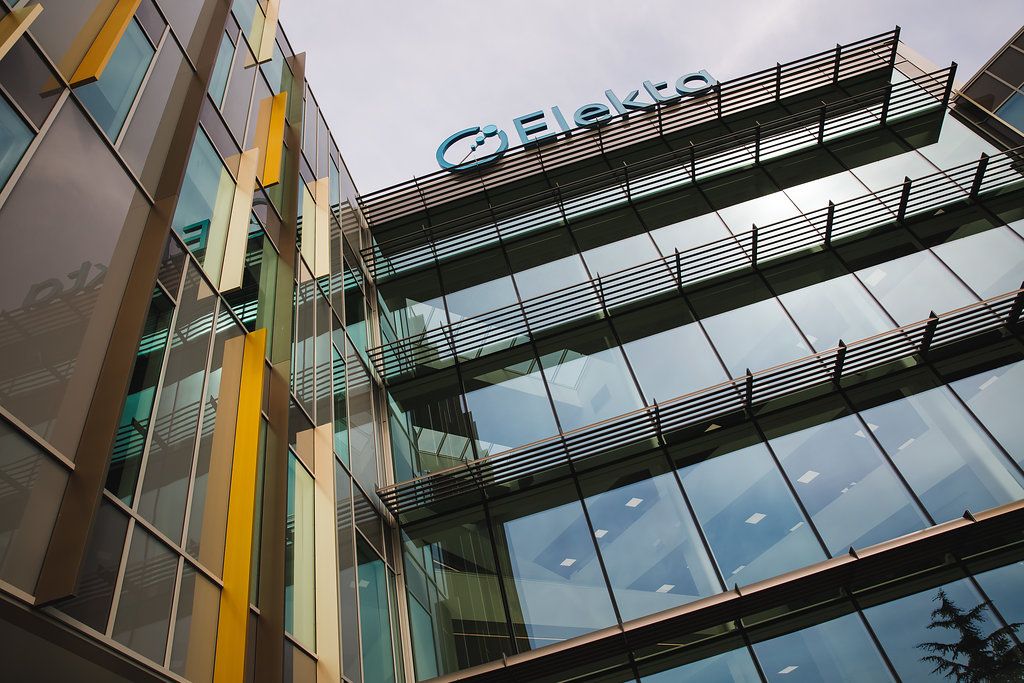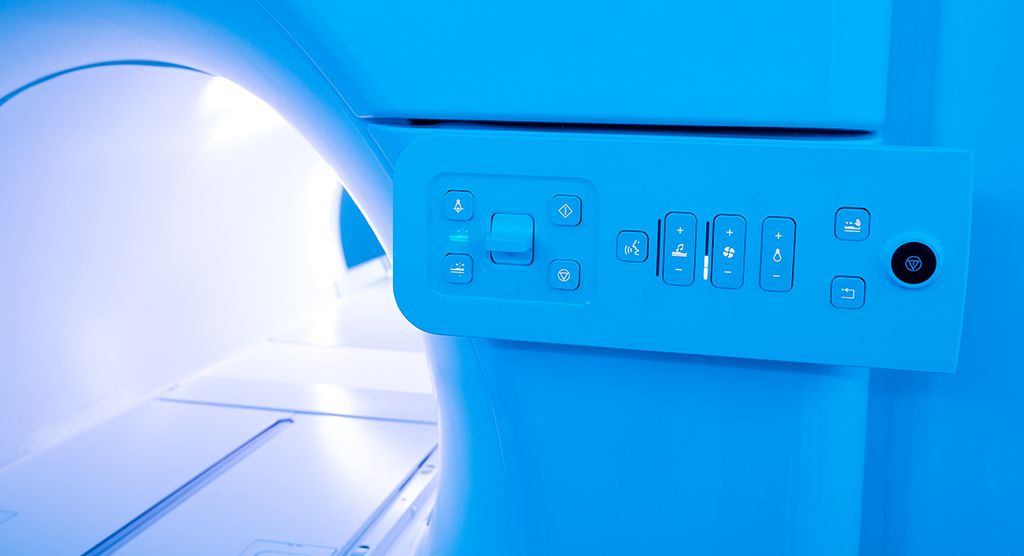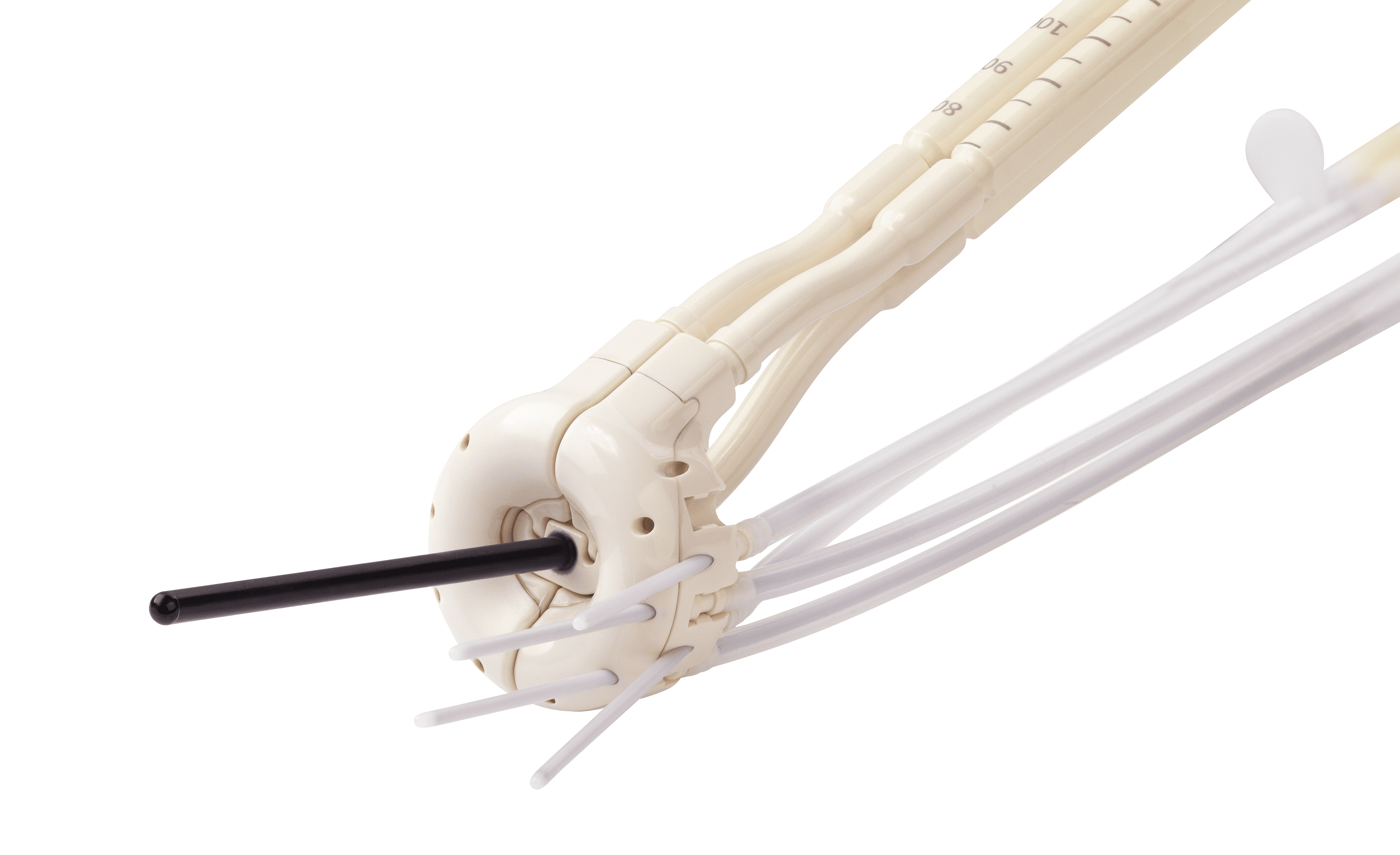The era of MR/RT in the UK
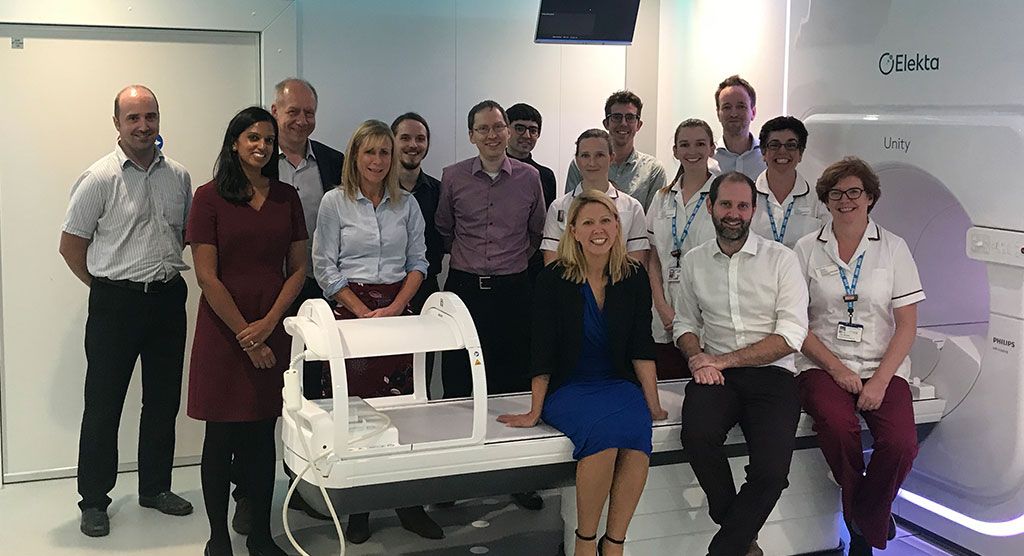
Prostate cancer patient was the UK’s first to be treated with Elekta Unity MR-linac at The Royal Marsden
Sixty-five-year-old Barry Dolling became a medical pioneer on September 18, the date he received the first of 20 radiotherapy sessions to treat his prostate cancer. The pharmaceutical sales coordinator from Selsdon, Surrey, achieved his new status by volunteering to be the first in the United Kingdom to have his treatments on Elekta Unity, a revolutionary magnetic resonance radiation therapy (MR/RT) system that allows live personalization of the treatment, using clear visualization of the daily patient anatomy that changes with MR images to reshape the treatment plan on the spot. Use of the system is a collaboration between The Royal Marsden NHS Foundation Trust and The Institute for Cancer Research (ICR), London.

Elekta Unity combines a state-of-the-art 1.5T MRI with an advanced radiation delivery system. The MRI provides superior visualization of the day to day changes in the anatomy and this enables the clinical care team to reshape the radiation dose for every treatment to account for changes in shape and position of the tumor and surrounding healthy tissue. This enables the patient to receive the best radiotherapy, every day. It also enables accurate dose to be delivered to the tumor, while minimizing radiation dose to healthy tissue. Since MRI imaging does not involve the use of x-rays or ionizing radiation, the care team can continuously image and monitor the patient anatomy throughout the treatment. The Royal Marsden and the ICR is the third of the seven Elekta MR-linac Consortium members to begin treating clinically with Elekta Unity.
Right patient at the right time
“Mr. Dolling came along at exactly the right time,” recalls Alison Tree, MD, Consultant Clinical Oncologist at The Royal Marsden and Team Leader in Uro-oncology Clinical Trials at the ICR. “We began recruiting patients to participate in the PRISM trial in July and we needed a first patient. I had told him about the study a couple months before because I anticipated he would be finishing the initial phase of his hormone therapy. Since he wouldn’t need long-term hormone treatments, had a relatively small prostate and no urinary symptoms he was an ideal candidate.”
The PRISM trial (Prostate Radiotherapy Integrated with Simultaneous MRI) is a 30-patient Royal Marsden study to assess the technical feasibility of delivering radical radiotherapy for prostate cancer using [Elekta Unity], including the feasibility of changing the radiotherapy plan on a daily basis to mirror internal anatomy changes.
The prostate is a good example of anatomy that is subject to changes in shape and position due to the movement of adjacent organs.
“In prostate radiotherapy, the rectum and bowel can move due to their ever-changing content, causing these organs to come into contact with the prostate,” Dr. Tree explains. “This in turn can cause the prostate to change its position minute-to-minute and hour-to-hour, and even deform the gland into a different shape as it squishes it from the back. The ability of Elekta Unity to monitor these events in real time allows us to compensate by modifying the radiotherapy plan each day.”
Moreover, the quality of the images that MRI provides is pristine compared with those of other imaging modalities, she adds.
“There’s no question that MRI gives us much better definition of the prostate than CT, where it’s almost impossible to see any prostatic anatomy,” she says. “I’ve been quite encouraged and pleased with the image quality we’re getting with Elekta Unity. It’s enables me to contour the capsule of the prostate and for planning purposes, while the cine MRI pulse sequence we use lets us easily track the motion of the target and surrounding organs while the beams are being delivered.”
In Mr. Dolling’s case, Dr. Tree was able to visualize some minor swelling of his prostate after the first few treatment sessions, enabling her to expand the treatment margins to encompass the entire gland.
“If we hadn’t been able to re-contour every day with Elekta Unity we might have missed that,” she observes. “We also saw some significant changes in his small bowel configuration day-to-day – and even during a fraction – based largely on the extent of bladder filling.”
Based on the CHHiP trial* (see sidebar) results, Mr. Dolling received 20 fractions on Elekta Unity from September 18 to October 15, for a per-fraction dose of 3 Gy and a total dose of 60 Gy. The total beam-on time for each of Mr. Dolling’s treatment sessions was no more than five-and-a-half minutes.
MR-linac indications to expand
With the PRISM trial underway, Drs. Tree and Professor Uwe Oelfke, Head of the Joint Department of Physics at the ICR and Royal Marsden, are looking forward to harnessing Elekta Unity for additional cancers.
“The surrounding anatomy in these cancers also moves regularly, and therefore would benefit by Elekta Unity’s ability to enable us to see what we treat.”
“We’re planning to go live with radiotherapy of the rectum and bladder in the next couple of months, and then I think we’ll move on to harder-to-treat cancers, perhaps by late 2019,” Dr. Tree says. “These difficult cases would be cancers of the pancreas, liver and lung, which have a poor prognosis and are subject to higher toxicities related to conventional radiotherapy. The surrounding anatomy in these cancers also moves regularly, and therefore would benefit by Elekta Unity’s ability to enable us to see what we treat.”
Prof. Oelfke and Dr. Tree have been impressed by their first clinical experience with Elekta Unity.
“For decades, the radiation oncology community has dreamt of the day when we could actually see what we treat in real time just as our surgeons do, and this day has arrived now,” Prof. Oelfke remarks. “The Royal Marsden and the ICR are innovation leaders in implementing new cancer technologies and treatment technologies. The installation of Elekta Unity demonstrates our continued commitment to provide the best care for our patients.”
“Our first use of Elekta Unity for Mr. Dolling has gone incredibly well,” Dr. Tree adds. “The machine has worked very well, and the technical re-planning and beam-on time are quite swift. The workflow is not extremely rapid and fully developed yet, but it will get faster as we find ways to improve it.”
“I jumped at the chance” to be first Elekta Unity patient
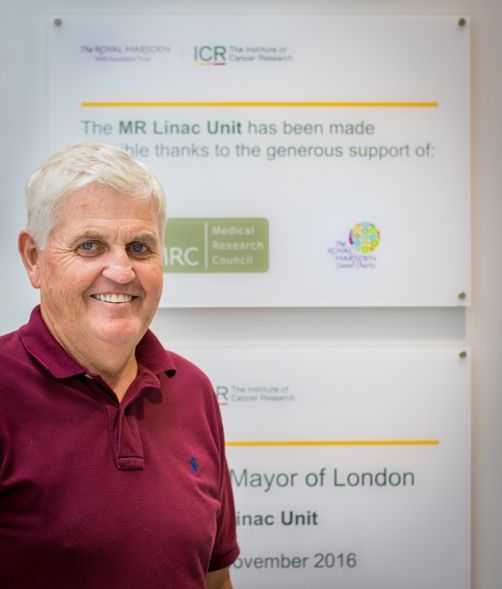
Diagnosed with prostate cancer in April 2018, Barry Dolling weighed his treatment options and decided that radiotherapy would cause the least disruption to his busy work life and his pastimes of swimming and golf. The Royal Marsden’s PRISM trial (Prostate Radiotherapy Integrated with Simultaneous MRI) follows the CHHiP fractionation schedule, which calls for significantly fewer treatment sessions, and – with the hospital’s new Elekta Unity system – the promise of a highly focused treatment with minimal side effects.
“Dr. Tree told me that with the MR-linac the physicians could hit the exact right spot on the prostate – which would mean I should experience very little in the way of side effects,” Mr. Dolling recalls. “If I had chosen surgery I could have been out of action for three months or longer, not to mention the complications that can happen with surgery. With radiotherapy I could still carry on working as usual. That’s why I jumped at the change to be in the PRISM trial.”
As luck would have it, Mr. Dolling was among the first patients to be recruited for the PRISM study and then was selected to be the UK’s first patient to be treated with Elekta Unity – and only the third worldwide.
He recalls, “I was quite taken aback by it all, thinking ‘God, I’m going to be the first in England to have this treatment!’ I was fortunate that the timing worked out for me as the trial had just opened at the time I would have been starting standard radiotherapy. I feel very privileged to be the first and I hope that the treatment will help others as well.”
The installation of the MR linac has been made possible by a £10 million grant from the Medical Research Council to the ICR, London, with additional support from The Royal Marsden Cancer Charity.
CHHiP trial demonstrates non-inferiority of shorter prostate radiotherapy course
CHHiP (Conventional or hypofractionated high dose intensity modulated radiotherapy for prostate cancer) was a phase III, multicenter, randomized trial, led by the ICR and The Royal Marsden, to determine whether hypofractionated radiotherapy schedules (fewer fractions in higher doses) for localized prostate cancer could improve the therapeutic ratio by either improving tumor control or reducing normal tissue side effects. At total of 3,216 participants were recruited to CHHiP over nine years. The five-year follow-up showed that 60 Gy in 20 fractions over four weeks was comparable to conventional RT fractionation, 74 Gy in 37 fractions over 7.4 weeks, and not associated with significant changes in late toxicity.
